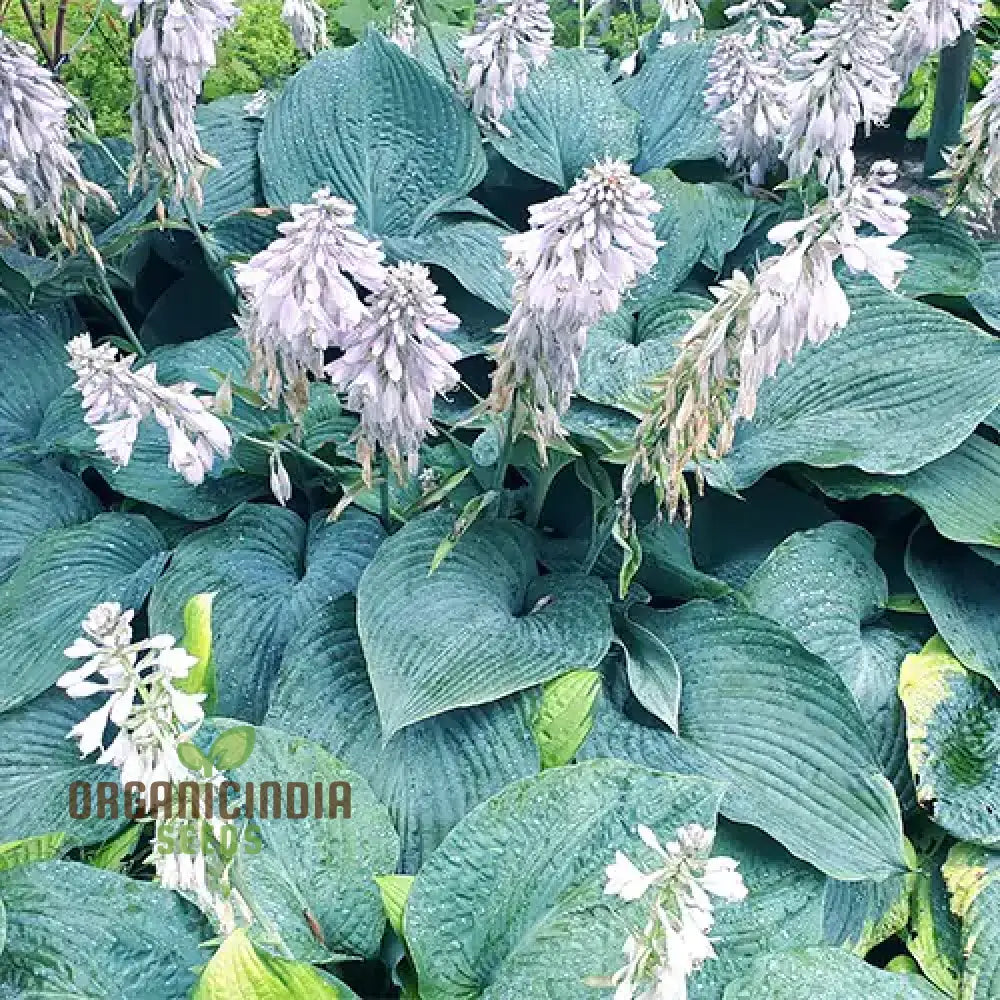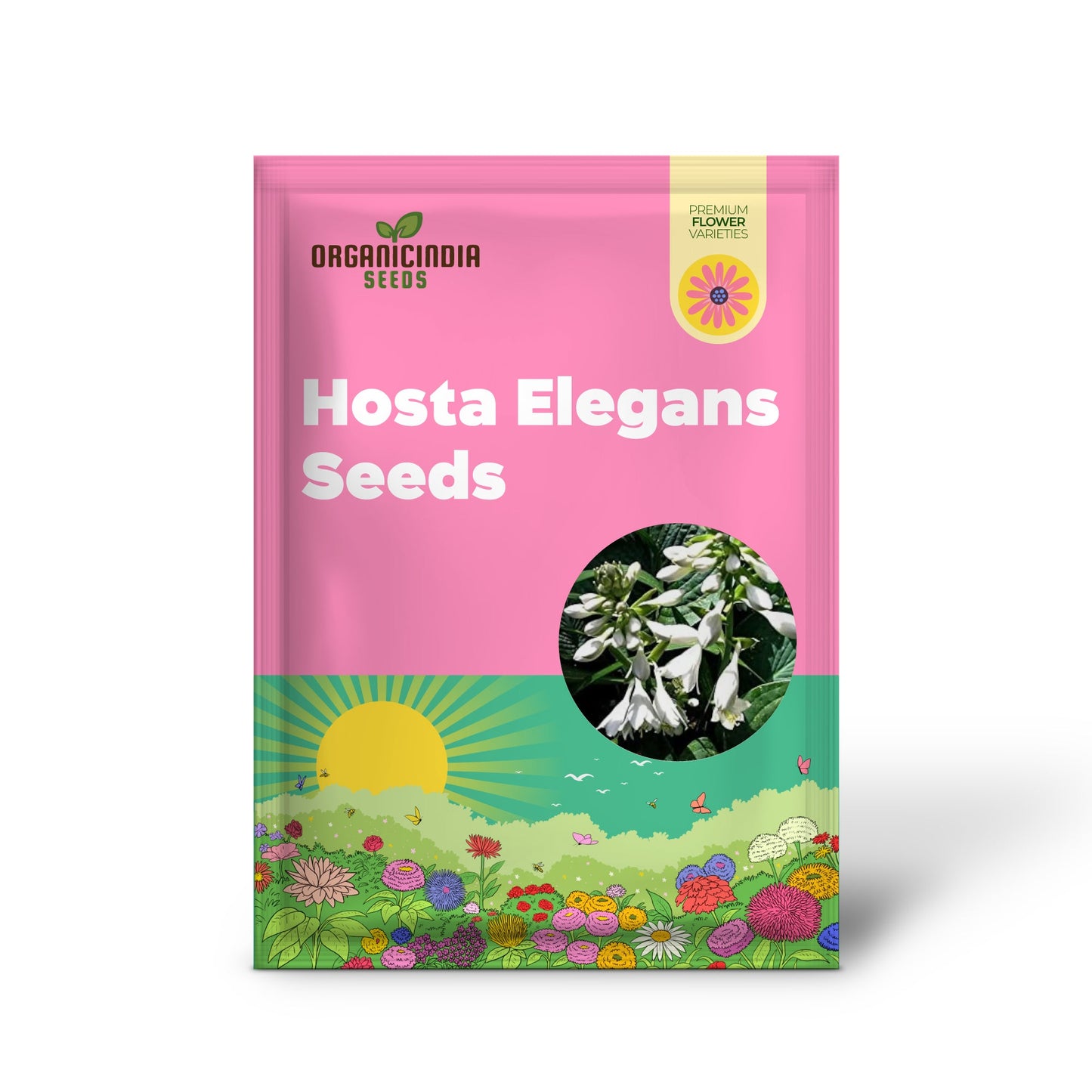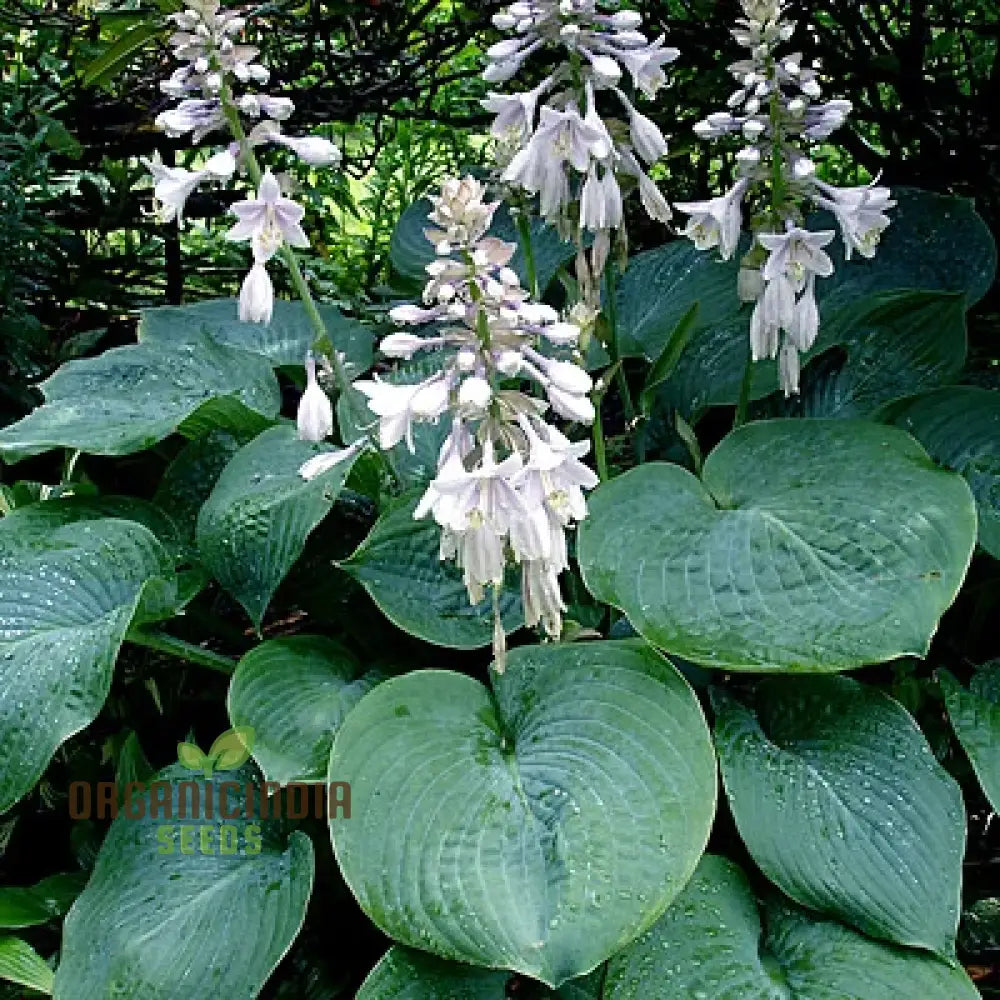Hosta Elegans Gray-Blue, Twisted White Flowers for Planting
Hosta Elegans Gray-Blue, Twisted White Flowers for Planting
Couldn't load pickup availability
Hosta Elegans Gray-Blue, Twisted White Flowers for Planting is a stunning and unique variety of hosta known for its striking gray-blue foliage and beautiful twisted white flowers. Hosta plants are popular for their attractive foliage, and this variety brings a refreshing twist with its unusual leaf color and elegant flowers.
Key Features:
- Common Name: Hosta Elegans
- Scientific Name: Hosta Elegans
- Leaf Color: Gray-blue with a smooth, waxy texture that gives the plant a striking, sophisticated appearance.
- Flower Color: Twisted, bell-shaped white flowers with a hint of lavender, creating a delicate contrast against the gray-blue foliage.
- Growth Habit: Clump-forming perennial with a dense, lush, and rounded habit.
- Height: Typically grows 18-24 inches (45-60 cm) tall.
- Spread: Can spread 24-36 inches (60-90 cm), making it an ideal ground cover or edging plant.
- Sunlight: Prefers partial to full shade, though it can tolerate some morning sun.
- Soil Type: Moist, well-draining, fertile soil is ideal for growth.
- Watering: Regular watering to maintain moist soil, especially during dry periods.
- Hardiness Zones: USDA Zones 3-9, making it suitable for a wide range of climates.
Why Grow Hosta Elegans?
- Unique Foliage: The gray-blue leaves of Hosta Elegans are striking and provide a bold contrast to other plants in the garden.
- Elegant Flowers: The twisted white flowers, which bloom in late summer, add an elegant touch to the plant and make it stand out in the garden.
- Shade Tolerance: This variety of Hosta is ideal for shady or partially shaded areas, where other plants might struggle to thrive.
- Low Maintenance: Hostas are relatively easy to care for, making them perfect for gardeners of all experience levels.
- Great for Borders or Groundcover: The plant’s spreading habit makes it ideal for filling in spaces or creating borders in shady garden areas.
- Attractive to Pollinators: The flowers attract pollinators like bees and hummingbirds, enhancing your garden's biodiversity.
Planting & Care Instructions:
-
Seed Preparation & Sowing:
- Starting Indoors: For best results, start seeds indoors 6-8 weeks before the last expected frost. Sow seeds in a well-draining seed-starting mix, covering them lightly with soil. Keep the soil moist and maintain a temperature of 60-70°F (15-21°C) for germination.
- Direct Sowing Outdoors: Once the danger of frost has passed and the soil temperature is warm enough, you can sow the seeds directly outdoors in a shaded area with rich, moist soil. It may take several weeks for seeds to germinate.
-
Transplanting: Once the seedlings are large enough to handle and the risk of frost has passed, transplant them into larger pots or directly into your garden. Space plants 24-36 inches apart to allow for their spreading growth.
Maintenance:
- Watering: Hostas prefer moist soil, so keep the soil consistently moist, especially during dry spells. However, avoid overwatering, as this can lead to root rot.
- Soil: Enrich the soil with compost or organic matter to improve drainage and fertility. Hosta plants thrive in rich, slightly acidic to neutral soil.
- Fertilization: Apply a balanced, slow-release fertilizer in early spring when new growth begins, and again mid-summer to promote healthy foliage and blooming.
- Mulching: Apply mulch around the base of the plant to retain moisture and keep the soil cool, which is beneficial during hot summer months.
- Deadheading: While the flowers are attractive, they may need to be cut back after blooming to maintain the plant’s appearance and encourage continued growth.
Winter Care:
- Cold Climates: In colder climates (zones 3-9), hostas go dormant in the winter. The foliage will die back, but the roots will remain alive. In autumn, cut back the foliage and add a layer of mulch to protect the roots from freezing temperatures.
- Mild Climates: In milder zones, the plant may remain evergreen, but it’s still beneficial to mulch around the base to protect it from extreme weather.
Ideal For:
- Shaded Garden Areas: Perfect for filling in shady spots where other plants might struggle to grow.
- Borders or Edging: Hosta Elegans makes a great border plant, adding texture and color to the edges of garden beds.
- Groundcover: With its spreading growth habit, this hosta can serve as a low-maintenance ground cover in shaded areas.
- Pollinator Gardens: The delicate flowers attract bees, butterflies, and hummingbirds, making this a great plant for a pollinator-friendly garden.
Summary:
Hosta Elegans Gray-Blue, Twisted White Flowers for Planting is a striking and easy-to-care-for perennial that adds elegance and sophistication to shaded garden areas. With its unique gray-blue foliage and delicate twisted white flowers, this hosta is perfect for borders, ground cover, or as a focal point in any garden. Whether you're looking to fill a shady spot or add texture to your garden, Hosta Elegans is an excellent choice that thrives in low-light conditions and requires minimal care.
Share






